2005 ANNUAL REPORT TO THE NEW YORK CITY COUNCIL
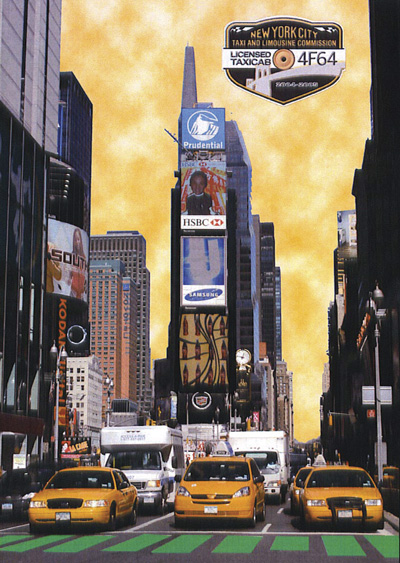
New
York City Taxi & Limousine Commission
Michael R. Bloomberg, Mayor
Matthew W. Daus, Commissioner/Chair
Commission
Structure
The
Board of the Taxi and Limousine Commission is comprised of nine
members, eight of whom are unsalaried Commissioners. Each member
of the Commission is appointed by the Mayor of the City of New York,
with the advice and consent of the City Council. Five of the Commission’s
members, one resident from each of the City’s boroughs, are
recommended for appointment by a majority vote of the Council Members
of their respective boroughs. The jurisdiction, powers and duties of
the Commission include the regulation and supervision of the business
and industry of transportation of persons by licensed vehicles for hire
in the City. Currently, four Mayoral and four City Council seats are
filled. The Manhattan seat is currently vacant.
Current Board Members

Matthew
W. Daus, Chairman
The TLC’s salaried Commissioner/Chairman, Matthew W. Daus, was
appointed in 2001 to fulfill the remainder of a term concluding January
31, 2003. In 2003, Commissioner Daus was re-appointed by Mayor Michael
R. Bloomberg to serve a full term expiring January 31, 2010, and unanimously
approved by the City Council’s Committee on Rules, Privileges
and Elections. The TLC Commissioner/Chairman presides over public meetings
of the Commission, and serves as the Chief Executive Officer of the
agency. Prior to his appointment, he served as General Counsel since
1998, and as Special Counsel from 1996 to 1998.

Elias
Arout
Re-appointed by the Mayor on the recommendation of the Staten Island
delegation to the New York City Council, Commissioner Elias Arout has
served on the TLC since 1988.
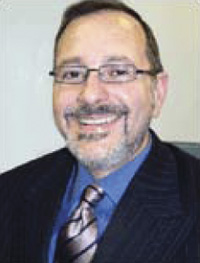
Noach
Dear
Appointed by the Mayor on the recommendation of the Brooklyn delegation
to the New York City Council, Commissioner Noach Dear is serving a seven year
term on the Board of Commissioners that commenced in late 2001. Commissioner
Dear was a member of the New York City Council for nearly 20 years,
which included a significant tenure as Chair of the Transportation Committee.

Harry
Giannoulis
Appointed by the Mayor on the recommendation of the Queens delegation
to the New York City Council in 1998. Commissioner Harry Giannoulis
is a founding member of the Parkside Group, a governmental relations
and public affairs consulting firm.

Edward
Gonzales • New Appointee
Appointed in September 2005 by Mayor Michael R. Bloomberg to a seven year
term on the TLC, Commissioner Edward Gonzales is a mortgage specialist
with Citigroup. Commissioner Gonzales was appointed to replace Commission
member Harry Rubinstein.

Elliot
G. Sander
Elliott G. “Lee” Sander was appointed by the Mayor in 1997,
and previously served as City Transportation Commissioner from 1994
to 1996. He currently also serves as Director of the Rudin Center for
Transportation Policy and Management at the Robert F. Wagner School
of Public Service at New York University.
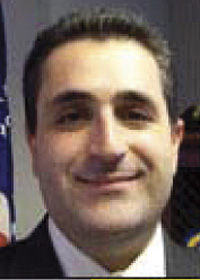
Howard
Vargas • New Appointee
Serving the remaining term of former Commissioner Alberto Torres, Commissioner
Howard Vargas was appointed by the Mayor on the recommendation of the
Bronx delegation to the New York City Council in September 2005. Commissioner
Vargas served as a court attorney for two judges of the Civil Court
of New York City before moving on to private practice. Currently, he
is an associate at Bartlett, McDonough, Bastone & Monaghan, LLP,
a prestigious law firm specializing in the field of medical malpractice
defense.

Iris
Weinshall
Commissioner of the New York City Department of Transportation (DOT),
Commissioner Iris Weinshall was appointed by the Mayor in 2003 to serve
a seven year term. Prior to her appointment as DOT Commissioner, she
served as the First Deputy Commissioner of the Department of Citywide
Administrative Services from 1988 to 1996.
Agency Budget and Headcount
The
TLC operated with a Fiscal 2005 budget of $23,492,355 ($17,923,470 for
personal services and $5,568,885 for other than personal services).
The agency’s Fiscal Year 2006 budget is $25,989,397 ($20,431,470
for personal services and $5,557,927 for other than personal services).
The TLC had an authorized headcount of 418 for the year.
Industry Overview
The
TLC is responsible for licensing and regulating the 12,779 medallion
taxicabs currently authorized to accept hails from passengers within
the five boroughs of the City of New York, as well as over 40,000 other
vehicles, which service the public via pre-arrangement and radio dispatch.
For-hire vehicles (FHVs) include community car service (or livery) vehicles,
black cars (which primarily serve a corporate clientele) and luxury
limousines with a seating capacity of up to 20 passengers. TLC also
licenses and regulates paratransit vehicles (also known as ambulettes)
and commuter vans, which are vehicles with a seating capacity of between
nine and 20 passengers authorized to transport passengers within authorized
geographic areas via prearrangement.
Finally,
TLC also licenses and regulates the businesses that manufacture, install
and repair the meters used in New York City taxicabs, brokers that assist
buyers and sellers of taxicab medallions, and agents that operate taxicab
medallions on behalf of owners. The following chart depicts the number
of current licenses issued by TLC as of December 31, 2005.
The
number of medallions, and therefore taxicabs, is fixed by both City
and State law; new laws passed by the State Legislature and City Council
in 2003 authorized the TLC to sell up to 900 additional medallion licenses.
592 of these were sold via sealed bid auctions in Fiscal Years 2004
and 2005.
It
is anticipated that the sale of the final block of 308 will take place
sometime in 2006. Unlike other licenses issued by the TLC, medallion
licenses are tangible assets that are transferable, and may be pledged
as security for loans. Since this license provides the holder with the
exclusive right to accept street hails in the City of New York, it has
a significant market value.
While
licenses are purchased and sold in private sales as well as the aforementioned
auctions, the TLC reviews and approves each transaction to ensure that
the purchaser meets the agency’s standards for licensure, and
that the seller's creditors and claimants, if any, have been paid from
the proceeds of the sale. While maintaining the value of medallions
is not a regulatory purpose of the TLC, strong medallion sale prices
have historically been used to judge the overall health and viability
of the industry.

In
November 2004, the average sales price for a corporate (or Mini-Fleet)
medallion was $333,000, an increase of 24% from the prior year. In December
2004, the average price of an individual medallion was $320,000, an
increase of 35% from the prior year. In 2005, medallion sales unexpectedly
broke records on the open market, with the year closing at an average
price of $350,000 for Individual Medallions and $391,000 for Corporate
Medallions.
Highlights of Key Activities
A.
Licensing Division
The
TLC announced several changes to its base licensing application and
review processes in 2005, with the primary difference being that all
new and renewal base applications will be reviewed by TLC staff, which
would make recommendations to the TLC Board of Commissioners for determination.
The TLC Board of Commissioners considers each application in an open
meeting, and votes on whether to approve the base application. A request
for a location change or a change of ownership by an existing base is
likewise voted upon by the TLC Board of Commissioners.
The
TLC also continued its commitment to maintaining high standards of customer
service for the applicants and licensees who visit the agency’s
facilities. Building upon the reductions in waiting time achieved through
previous streamlining efforts, several modifications to the way applicants
are served have resulted in additional reductions in waiting time at
the agency’s Licensing Division. In one successful example, the
TLC now allows applicants to make appointments at the Licensing Division,
thereby reducing the amount of time that applicants need to spend there.
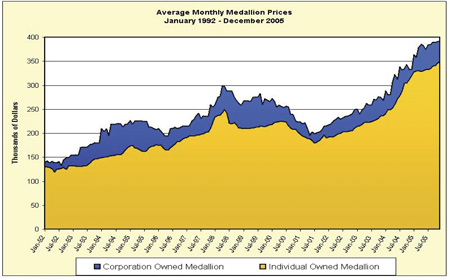
To
further assist applicants with the licensing process, the Staten Island
Facility introduced the LiveScan Fingerprint system in 2005, which generates
forensic-quality fingerprints that are instantly transmitted to the
New York State Division of Criminal Justice Services for analysis. Prior
to the LiveScan system, fingerprint impressions were recorded manually
with ink on a card, mailed and then manually reviewed; a process which
often took several weeks.


B.
Adjudication Division
The
TLC Adjudication Division focused on a number of customer-service initiatives
in 2005. These included the computerization of judges’ decisions,
the simplification of hearing schedules, improved communications with
licensees with regard to outstanding judgments and missed hearings,
and making the tribunal’s environment more userfriendly.
C.
Enforcement Division
The
TLC Uniformed Services Bureau (USB) is primarily responsible for enforcing
Administrative Code provisions prohibiting for-hire activity without
a TLC license, as well as all rules and regulations specific to the
for-hire industry. USB Officers also conduct safety and emissions inspections
for medallion taxicabs, and participate in special enforcement operations
affecting all TLC regulated industries.
In
2004, TLC enforcement officers conducted a total of 59,074 vehicle stops
(consisting of 38,226 FHVs and 20,848 medallion taxicabs), resulting
in the issuance of 47,972 summonses (32,683 for FHVs and 15,289 for
medallion taxicabs). In 2005, officers made 42,070 car stops, of which
26,387 were FHVs and 15,683 were medallion taxicabs, which yielded the
issuance of 42,838 summonses (26,848 to FHVs and 15,990 to medallion
taxicabs). The number of vehicles seized for unlicensed activity remained
fairly consistent in the past year, with 2,128 in 2004 and 2,073 in
2005.
In
2005, TLC Officers maintained the agency’s vigilance against service
refusals through the undercover initiative known as “Operation
Refusal” whereby undercover officers posing as prospective passengers
hail taxicabs. Operation Refusal conducted 3,207 tests in 2005, up 18%
from the 2,709 tests conducted in 2004. The driver compliance rate grew
to 97% in 2005, up from 95% the prior year.
"Operation
Street Hail" is another undercover initiative designed to enforce
against both licensed and unlicensed for-hire vehicle drivers and owners
who illegally accept passengers by means other than pre-arrangement.
TLC Officers issued 5,654 summonses for illegal street hails in 2005,
as compared to 10,166 summonses in 2004. In 2005, 218 vehicles were
seized for unlicensed activity through Operation Street Hail, as compared
to 437 in 2004.

The
TLC also continued its progress in ensuring the compliance of the For-Hire
Vehicle industry with rules requiring wheelchair accessible service
on request. Uniformed Services Bureau personnel visited 159 bases in
2005, issuing 110 notices to comply, and 23 summonses for non-compliance.
Twenty-one providers have been identified as having the ability to offer
wheelchair accessible service on behalf of contracting bases.
On
January 30, 2005, the TLC’s Safety and Emissions Division implemented
On-Board Diagnostic (OBD) II testing for all medallion taxicabs, serving
as the first large scale inspection facility in the State. OBD II, which
tests engine performance by connecting directly to the vehicle’s
on-board computers, is in addition to the TLC’s state-of-the-art
264-point safety and emissions mechanical and visual inspection process.

The
TLC conducted a total of 59,492 taxicab inspections in 2005, as compared
to 61,856 in 2004. The initial failure rate for 2005 was 51.32%, a decrease
of almost 5% from the 2004 initial failure rate of 55.9%. The Safety
and Emissions Division also “hacked-up,” or certified for
service, 3,309 medallion taxicabs in 2005. There were 3,680 medallion
taxicabs “hacked-up” in 2004.
D.
Technology Enhancements
As
in prior years, the TLC website serves as an effective means of sharing
important information with regulated industries and the riding public.
The number of successful "hits" for the website increased
from 13.9 million to 17.9 million in 2005, an increase of 28.64%. Part
of this increase is attributed to a spike in usage during the December
Transit Strike. During the week of December 19, 2005, “web hits”
were up over 143%, with more than one million views catalogued.

In
the course of the year, the TLC continued its work in enhancing its
website’s ability to serve its growing number of customers. These
improvements include:
- The
systematic update of all agency rules and regulations, now more prominently
available through the primary navigation menu;
- The
posting of current licensees in all categories. This enhancement makes
it easier for Base operators to be sure of a driver or vehicle’s
licensing status prior to dispatch.
- The
construction of a “Commission Meetings” section accessible
through the primary navigation menu that allows visitors to peruse
public notices, as well as meeting minutes and transcripts.
- Medallion
owners may now access and download an Initial Inspection Schedule
to supplement the listings available through the Vehicle Inspection
Report (VIR) they receive at the time of their inspections, or on
the back of each Rate Card.
- The
TLC’s website now includes a detailed list of criteria for wheelchair
accessible vehicles brought into service in satisfaction of regulatory
requirements of wheelchair accessible service in the For-Hire Vehicle
industry.

E.
Taxicab Service Improvements
The
Taxicab Service Enhancements Team was very active in 2005. After completing
an exhaustive evaluation process, the TLC entered into negotiations
with several highly qualified vendors that will result in a number of
contracts being submitted to the Comptroller’s Office for registration.
Upon
registration of the contracts, the vendors will undergo a rigorous acceptance
phase that will test the equipment in field conditions for functionality,
security and passenger acceptance, which will be measured through surveys.
After passing the acceptance test phase, vendors will be authorized
to compete for the business of medallion taxicab owners. The TLC anticipates
significant or complete implementation during 2006.
TLC’s
goals and objectives for its taxicab service enhancements project are:
- To
improve customer service for the riding public by implementing the
electronic collection of trip data, providing universal credit/debit
card payment capability, installing an interactive passenger information
monitor, and requiring the transmission of two-way text messaging
in all New York City taxicabs.
- To
develop and maintain the agency infrastructure required to efficiently
store and access all information generated as a result of these technological
enhancements.
- To
ensure that solutions are practicable for all segments of the taxicab
industry including fleets, individually-owned medallions, and leased
medallion operators.
The
installation of the technological enhancements will assist the TLC in
communicating with taxi drivers and offering payment options to the
riding public.

F.
Taxicab Vehicle Enhancements–Accessible and Clean-Air Taxicabs
Complying
with Local Law No. 51 of 2003, TLC worked with the Taxicab industry
to place on the road 27 vehicles with medallions dedicated for use on
wheelchair accessible vehicles. Further, the TLC also placed into service
19 vehicles with medallions dedicated for use on clean-air vehicles.
To
facilitate the use of vehicles utilizing hybrid technology, the TLC,
on September 8, 2005, approved rules to allow hybrid-electric vehicles
to operate as taxicabs. These rules set minimum specifications to allow
for currently available hybrid vehicles to be used as taxicabs, voluntarily,
at the option of the taxicab owner. The passage of these rules was in
accordance with the Local Law that required the TLC to approve one or
more models of hybrid electric vehicles for use as taxicabs. The TLC
approved the following hybrid-electric vehicles: the 2006 Ford Escape,
2006 Mercury Mariner, 2006 Toyota Highlander, 2006 Toyota Prius, 2006
Honda Civic, 2006 Honda Accord and the 2006 Lexus RX400H.
G.
Decrease in Consumer Complaints
As
reported in the Fiscal Year 2005 Mayor’s Management Report, violations
generated from consumer complaints decreased. Specifically, for Fiscal
Year 2005, the TLC logged 3,814 violations generated by “Driver
Rudeness” complaints, down from the prior year’s 5,189 –
a decrease of 26%. Likewise, service refusal violations generated from
consumer complaints were down 23%, from 5,068 in Fiscal Year 2004 to
3,814 in Fiscal Year 2005. Abusive behavior was down 22%, from 1,314
complaint-generated violations in Fiscal 2004 to 1,025 the following
year.
Total
violations in selected categories fell from 20,710 in Fiscal Year 2004
to 20,269 in 2005 – a decrease of two percent, while actual complaints
received declined by eight percent, from 18,860 in Fiscal Year 2004
to 17,350 in Fiscal Year 2005.
H.
Transit Strike
Following
the expiration on December 15, 2005 of the MTA NYC Transit’s contract
with Transport Worker’s Union, Local 100, the union commenced
a labor action on December 20, 2005 that resulted in a complete shutdown
of New York City’s subways and buses for a period of three days.
The City's Office of Emergency Management (OEM) coordinated the City's
official Transit Strike Contingency Plan. The TLC developed a portion
of the plan meant to offer enhanced services for the public.
Key
elements of the TLC portion of the plan, included the setting of special
temporary zone-based group-riding fare structures for medallion taxicabs,
for-hire vehicles (FHVs) and commuter vans; and the authorization of
FHVs and commuter vans to pick-up passengers at bus stops, park and
ride and car-pooling facilities.
The
goal of the TLC’s plan was to maximize the use of every seat available
in the approximately 50,000 taxicab and for-hire vehicles licensed in
New York City.
I.
International Transportation Regulators’ Conference
The
New York City TLC was a primary participant in the most recent annual
conference of the International Association of Transportation Regulators
(IATR). The 18th annual event was attended by representatives from more
than 40 leading regulatory agencies from around the world.
Presenters’
topics included such key issues as vehicle inspections and adjudications,
technology, enforcement and customer service, with many participants
attending breakout sessions to discuss progress and problems with experts
in their various fields. Other presentations delved into wheelchair
access and emergency preparedness. Roundtable discussions addressed
such key areas as paratransit licensing, drug testing, taxicab leasing,
and the question of whether to limit the number of driver licensees.

New
York City TLC Commissioner/Chairman Matthew Daus and Chief of Staff
Ira Goldstein were invited to deliver a presentation on its Customer
Service Enhancements project. While other cities have various aspects
of the new technology, New York City is developing a comprehensive approach
to the enhancements. Many of the TLC’s fellow regulators were
very interested in these technology-based improvements.
J.
International and Domestic Visitors
As
always, this year TLC was pleased to receive visits from taxi regulation
representatives from outside New York City and to exchange ideas. Some
highlights include:

A
visit from Mr. Toshio Fukita, Director of Japan’s Passenger Transport
Division, and members of his staff, who headed a delegation that included
the Japanese Consul General, Mr. Masanori Yoshida. The delegation consulted
with the TLC on regulation issues, driver training, and the modification
of Japanese taxi fares, among other topics.

The
TLC also enjoyed a visit from Mr. D. Michael Tully, Director of the
Saint Louis Metropolitan Taxicab Authority, who visited the TLC to discuss
the similarities and differences of our regulatory approaches, as well
as plans for his agency’s growth.
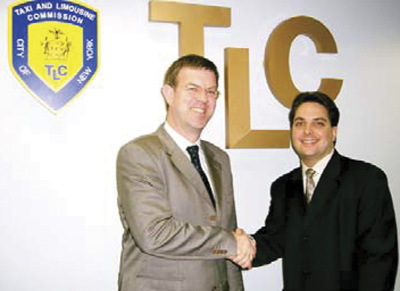
Ireland’s
newly chosen National Taxi Regulator, Mr. Ger Deering, visited recently
to discuss varying approaches to illegal livery activity, the regulation
of taxi fares, and the standardization of taxi services.

Je-Ryong
Song, a research fellow from the Gyeonggi Research Institute in Korea,
spent several days studying the TLC’s regulatory challenges and
successes, bringing volumes of information back on his return to study
which programs may be replicated there, and which could not.
© 2015 TLC Magazine Online, Inc. |